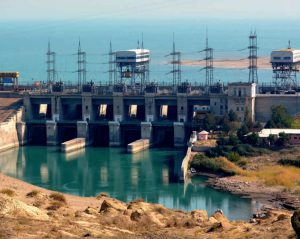Helping to decarbonise the global economy should become the new mantra for high-polluting countries like China, which despite pledging to peak greenhouse gas emissions by 2030, still faces important challenges in low-carbon power transmission, experts said at the 2016 Climate Action Summit in Washington DC recently.
Around 700 leaders of multilateral bodies, governments, businesses, and NGOs gathered in the US capital two weeks after 175 countries signed the Paris Agreement, in an attempt to boost the commitments and actions of multiple stakeholders.
Zhang Xiliang, director of the Institute of Energy, Environment, and the Economy at Tsinghua University said at the summit that China faces a “great challenge” in decarbonising, despite advances in wind and solar technology.
Solar energy generation in China has increased 168 times over the past five years, meaning the Asian country surpassed even former world leader Germany in terms of installed solar energy capacity. In the same period, wind energy capacity in China quadrupled. Yet nearly 10 percent of solar capacity remained untapped during the first half of 2015, while around 15 percent of wind power was wasted during the year, according to the World Resources Institute (WRI). In regions such as Gansu, Ningxia, Heilongjiang, Xinjiang and Yunnan, these figures are even higher.
There is still a “lack of clarity” about how renewables can feed into the electricity grid, according to a recent study by WRI. China has indicated that its CO2 emissions will begin to drop after 2030 as it raises the amount of energy from carbon-neutral sources to 20%.
According to Carlos Rittl, executive secretary of the Climate Observatory, China has made big commitments to reducing future emissions but they are not proportional to the impact that the growth in emissions will have in the long term.
“We see no indication of when China will begin to talk about decarbonisation,” Rittl told Diálogo Chino. However Rittl did praise the Chinese government’s decision not to open new coal plants and to increase investments in renewables, which have risen from US$ 39 billion to US$ 111 billion since 2010.
Beijing has also signaled its intention to ratify the Paris Agreement later this year, which represents an “interesting political step” and might encourage the country’s main private sector actors to do the same, Rittl added.
Prioritising China
Three major Chinese corporations; China Steel Corporation, Broad Group, and Yingli Green Energy Holding Company Limited, recently signed up to the Science Based Targets Initiative, a private sector emissions reductions scheme announced on the eve of the 2016 Climate Action Summit. The initiative helps companies determine how much they need to cut emissions by to help limit global warming to 2 degrees. Over 150 multinational companies signed the initiative which was jointly launched by WRI, WWF and the United Nations Global Compact, 34 of which are Asian. The initiative hopes to get 250 signatories by 2018.
WRI’s Cynthia Cummis, who works on the initiative, told Diálogo Chino that engaging China was a priority because of the quantity of GHGs the country emits and the lack of emissions goals at the corporate level. Cummis also said public reporting of emissions in China was less common than in other countries.
“The idea is to make companies increase the ambitiousness of their targets, in line with what the science says. We want to make this initiative standard practice in the business world,” Cummis said.
“It’s already a positive sign. We’re surprised that we got these three companies. We now have to concentrate our efforts even more to focus on China in the coming years,” added Cummis.
Living up to commitments will be subject to regular evaluation with compliant companies receiving certification.
Science
The targets set out in the Paris Agreement apply to national governments, but must be backed up by science, Zhang says. He also stressed the importance of each country creating its own climate policies in order to make the low-carbon transition.
However, Zhang conceded that transformation to a low-carbon economy requires human capital and technological innovation, something developing countries often lack.
In 2015, Zhang took part in a research project with the Massachusetts Institute of Technology (MIT) to bring new insights into how China can reverse the rising trajectory of its CO2 emissions within two decades. Zhang argues that this type of cooperation should include decision-makers since it is not enough to set political goals without engaging the scientific community and the innovators who can realise them.
US-based experts speaking at the Climate Action Summit agreed. “We need to change our mindset and see the need to decarbonise the economy in the long term as an opportunity. We need to leverage investments in collaborations and initiatives with low carbon technologies,” said Alden Meyer, director of strategy and policy at the Union of Concerned Scientists.
According to economist Jeffrey Sachs, director of the Earth Institute at Columbia University nobody has so far made a realistic assessment of how to decarbonise: “Planning seems to be a bad word right now,” he joked.
Sachs criticised the Intended Nationally Determined Contributions (INDCs) submitted in the run-up to Paris as “insufficient and inadequate” and added: “What we need is long-term planning and some market magic.”






